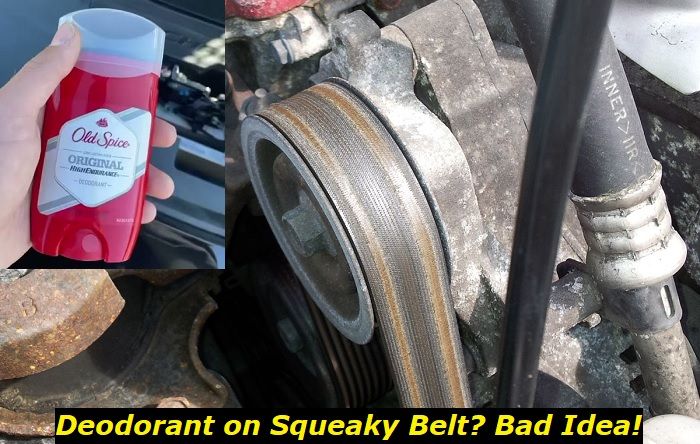KTM stands out when it comes to having a wide selection of motorcycles that are bred for performance, fuel economy, reliability, and style. It's for this reason that the Australian brand has quickly evolved as a major player in the industry alongside other more established brands such as Honda, Yamaha, Kawasaki, and others.
Despite the promising benefits of the 300 TPI to riders, there have been horror stories shared by owners about it, which we have compiled here. Hopefully, this will help you understand the common problems you might face if you are thinking of buying the unit, or if you already have one, at least you are aware of the risks you may encounter with it and the possible solutions for them.
.jpg)
Key Advantage of the KTM 300 TPI
One key feature that elevates the KTM 300 TPI is its highly-efficient fuel delivery system. TPI stands for Transfer Port Injection, which is a type of fuel injection system used in some KTM motorcycles.
TPI works by injecting fuel into the transfer ports, which are located between the cylinder and the crankcase. This allows the fuel to be mixed with the air more evenly, resulting in better combustion and more power. TPI also has the advantage of being more efficient than other types of fuel injection systems, and it produces lesser emissions.
KTM was the first motorcycle manufacturer to use TPI, and it has become a standard feature on many of the brand's bikes. The TPI tech has helped KTM to become one of the most successful motocross brands in the world, and its bikes are known for their power and performance. If you're looking for a bike that can take your riding to the next level, then a KTM with TPI is a great option.
Common Causes of KTM 300 TPI Problems
As mentioned, the 300 TPI offers all sorts of benefits, especially in overall engine performance, fuel efficiency, and ride comfort. While it was good for KTM to push the envelope to proceed with its TPI tech innovation in its 300 series, it eventually came with unrealized problems for buyers over the years.
Based on customer reviews found in reputable automotive publications, forums, and personal accounts of owners, here are the major problems that they have encountered with the 300 TPI:
1. Cylinder Scoring Marks
If your KTM 300 TPI motorcycle is starting to show signs of wear on the engine cylinder, it's important to take care of the problem as soon as possible. Left unchecked, this wear can lead to serious damage to the engine and loss of power.
a. Repairing the Cylinder
Repairing a worn engine cylinder may sound overwhelming, but it's not really that difficult if you know your way around the engine. It can be done with just a few tools and supplies.
The first thing you'll need to do is remove the seat and gas tank. This will give you access to the engine cylinder. Then, you'll need to remove the spark plug from the cylinder. Next, use a clean rag to wipe away any debris or oil that has accumulated on the spark plug hole.
Once the spark plug hole is clean, you'll need to remove the cylinder head. To do this, first, remove the four bolts that hold the cylinder head in place. Next, carefully lift the cylinder head off of the engine. You may use a piston ring compressor to compress the rings on the cylinder to make the engine component easier to detach.
With the cylinder head removed, you'll be able to see the engine cylinder. Inspect the cylinder for any signs of wear, such as scoring or pitting. If you see any damage, use a honing tool to lightly smooth out the surface of the cylinder.
Once the surface of the cylinder has been smoothened and lubricated, you can reassemble the engine and replace the spark plug.
b. Replacing the Cylinder
If your cylinder appears badly damaged and is beyond repair, it should be replaced already. To do this, simply repeat the process to remove the worn cylinder.
Proceed by lubricating the piston rings with some oil. This will help them expand properly when the engine is started.
After that, carefully insert the new cylinder into the engine. Make sure that it's seated correctly and that the piston rings are properly aligned.
Once the new cylinder is in place, use the socket wrench to torque the four bolts that hold it in place. These bolts should be tightened to factory specifications.
Finally, reattach the seat and gas tank. Once everything is back in place, your bike is ready to hit the trails again.
To maintain the quality of your engine cylinder, make sure that it is properly lubricated with the right quality and quantity of engine oil.
2. Worn Piston
The most probable culprit causing the damage to your cylinder is a faulty piston. It could be that it is not aligned properly, not lubricated enough, or simply damaged. A worn piston signals that it already needs to be replaced.
Just repeat the same process to extract the piston from the cylinder as discussed in the previous item. Then, to install the new piston, you'll need to use a piston ring compressor. If not, you can carefully tap the rings into place with a soft mallet.
Once the rings are in place, simply slide the piston into the cylinder. Finish by reassembling the cylinder head and all the other parts you have removed prior in order to complete the whole process.
3. Reed Petal Damage
A reed petal is a thin piece of metal that sits in the reed block and vibrates to create the engine's sound. Over time, this petal can wear down and need to be replaced.
Replacing a worn reed petal in the KTM 300 TPI is a relatively simple process that can be completed in a few minutes. To replace a worn reed petal in the KTM 300 TPI just remove the gas tank.
Unscrew the four screws that hold the reed block in place and lift out the old reed petal and insert a new one. Make sure that the new petal is properly seated and aligned before screwing the reed block back in place.
Lastly, reattach the gas tank, start the engine and let it warm up. Check for any leaks and make sure that the new petal is functioning properly.
4. Worn Spark Plug
A worn spark plug is a normal problem in just about any type of vehicle. A spark plug can last up to 20,000 miles or up to five years but its wear could speed up depending on some factors like dirt, rust, corrosion, or excessive heat.
The spark plug is located in the engine near the cylinder head. Inspect it first for any signs of dirt or damage before going further.
a. Cleaning the Spark Plug
If your spark plug has no signs of damage and soot has just developed in its connector, a simple cleaning should do the job. Begin by unscrewing the spark plug using a spark plug wrench.
Next, clean the thread in the engine with a wire brush. Check the spark plug gap with a feeler gauge, and clean the electrode with a wire brush. Apply an anti-seize compound to the thread for a good measure.
Complete the process by screwing the spark plug back in by hand until it is tight. Make sure to torque it to the specified value using a torque wrench.
b. Changing the Spark Plug
If the spark plug is burnt or worn, it means that it should be changed right away. Start by unscrewing the spark plug using a spark plug wrench. Then, clean the thread in the engine with a wire brush.
Next, apply some anti-seize compound to the threads of the new spark plug. Screw in the new spark plug by hand until it is tight, then use the spark plug wrench to tighten it another quarter turn.
Reconnect the spark plug cap, and see if any issues you are still experiencing performance issues with your bike.
Symptoms of the Common Problems Experiencing by KTM 300 TPI Owners
Without taking the crucial components of your motorcycle apart, there are red flags that hint at the common 300 TPI problems we have shown in the preceding section. Here are the common symptoms that you should watch out for:
1. Misfires
You may experience intermittent power losses as your engine does not feel like it's firing properly.
2. Rough Idle
Your bike seems to struggle in keeping its motor on while idling.
3. Clunky Noises
These may come in the form of knocking sounds or metal scraping against each other.
4. Hard Starts
Starting your motorcycle even if you just parked it shortly can be a chore.
5. Power Loss at High Speed
At max highway speeds, your bike may have a hard time keeping up its pace even if you are revving harder.
Our Thoughts
The KTM 300 TPI is definitely a good bike will all of its promising features. However, when operating one, be sure to be more vigilant about the symptoms of the common problems users experience with it. Doing so would help you address the problems as they appear and save you a very expensive trip to the mechanic.
About the authors
The CarAraC research team is composed of seasoned auto mechanics and automotive industry professionals, including individuals with advanced degrees and certifications in their field. Our team members boast prestigious credentials, reflecting their extensive knowledge and skills. These qualifications include: IMI: Institute of the Motor Industry, ASE-Certified Master Automobile Technicians; Coventry University, Graduate of MA in Automotive Journalism; Politecnico di Torino, Italy, MS Automotive Engineering; Ss. Cyril and Methodius University in Skopje, Mechanical University in Skopje; TOC Automotive College; DHA Suffa University, Department of Mechanical Engineering






Add comment